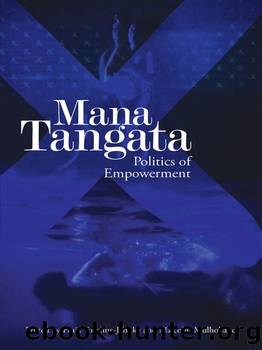Mana Tangata by Huia Tomlins-Jahnke

Author:Huia Tomlins-Jahnke
Language: eng
Format: epub
Publisher: Huia (NZ) Ltd
Section Three
MÄori Health
Chapter Seven
MÄori Mental Health: A MÄori Response
Dr Te Kani Kingi
Background
The current problems in MÄori mental health are well documented. MÄori rates of admissions continue to exceed that of non-MÄori, and are similarly matched by concerns over service use, how facilities are accessed and overall patterns of MÄori admissions. For many MÄori, initial contact with a mental health service is through the justice system, via the police or welfare services, and under compulsion. Due in part to this, problems tend to be more acute, are often more difficult to treat, and accordingly result in outcomes that are less positive and more difficult to manage (Durie 1998).
Previous studies have also revealed an over-representation by MÄori in acute disorders, and are almost twice as likely to be readmitted compared with non-MÄori (Deloitte and Touche Consulting Group 1997). Heavy drug use among young MÄori, particularly of cannabis, led to a dramatic increase in drug-related disorders during the 1990s (Te RÅpÅ« Rangahau Hauora a Eru PÅmare 1995). Psychosis and alcohol and drug abuse have also been shown to account for almost a third of first admissions. Readmission rates for affective disorders and psychotic illness have been 36 percent for women and 75 percent for men: higher than corresponding non-MÄori rates.1 Schizophrenic psychosis is a common cause of admission for MÄori males, and was at one stage almost twice the rate as for non-MÄori.
Suicide, a problem that was almost unheard of in traditional times, increased by an alarming 162 percent during the 1980s, and continues to have a dramatic effect on MÄori communities (Te Puni KÅkiri 1996). More recently, problems associated with the use of meta-amphetamine have received considerable media attention, and, while information on its use is not extensive, there is evidence to suggest it is becoming increasingly problematic for MÄori in particular (Massey University 2005).
Aside from these admission-based statistics, Te Rau Hinengaro: The New Zealand Psychiatric Epidemiology Study has provided additional insight into the actual prevalence of mental health problems within the community. It revealed that MÄori in particular suffer from disproportionate levels of mental disorder and bear a significant proportion of the associated burden.
The study revealed that the life-time prevalence of mental disorder among the MÄori population was 50.7 percent, with twelve-month and one-month rates of 29.5 percent and 18.3 percent respectively. When compared with other composite ethnic groups and Pacific peoples (that is, non-MÄori non-Pacific) a greater proportion of MÄori had twelve-month anxiety, mood, substance use and eating disorders. After adjusting for age, sex and socioeconomic circumstances, differences remain between MÄori and Pacific people for mood disorders and substance use disorders, and between MÄori and others for substance use disorders (Oakley Browne et al 2006).
Introduction
Due to the extent of these problems and the publicity that often surrounds mental illness, one could reasonably assume that these issues have always been a feature of MÄori society â that in fact MÄori are somehow genetically predisposed to mental illness, or that perhaps cultural factors are to blame. The mere fact that mental health
Download
This site does not store any files on its server. We only index and link to content provided by other sites. Please contact the content providers to delete copyright contents if any and email us, we'll remove relevant links or contents immediately.
The Secret History by Donna Tartt(18087)
The Social Justice Warrior Handbook by Lisa De Pasquale(11941)
Thirteen Reasons Why by Jay Asher(8416)
This Is How You Lose Her by Junot Diaz(6411)
Weapons of Math Destruction by Cathy O'Neil(5801)
Zero to One by Peter Thiel(5463)
Beartown by Fredrik Backman(5308)
The Myth of the Strong Leader by Archie Brown(5217)
The Fire Next Time by James Baldwin(4998)
How Democracies Die by Steven Levitsky & Daniel Ziblatt(4940)
Promise Me, Dad by Joe Biden(4899)
Stone's Rules by Roger Stone(4833)
100 Deadly Skills by Clint Emerson(4663)
Rise and Kill First by Ronen Bergman(4537)
A Higher Loyalty: Truth, Lies, and Leadership by James Comey(4534)
The David Icke Guide to the Global Conspiracy (and how to end it) by David Icke(4361)
Secrecy World by Jake Bernstein(4355)
The Farm by Tom Rob Smith(4306)
The Doomsday Machine by Daniel Ellsberg(4233)
